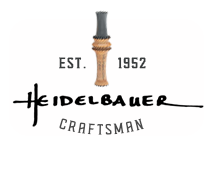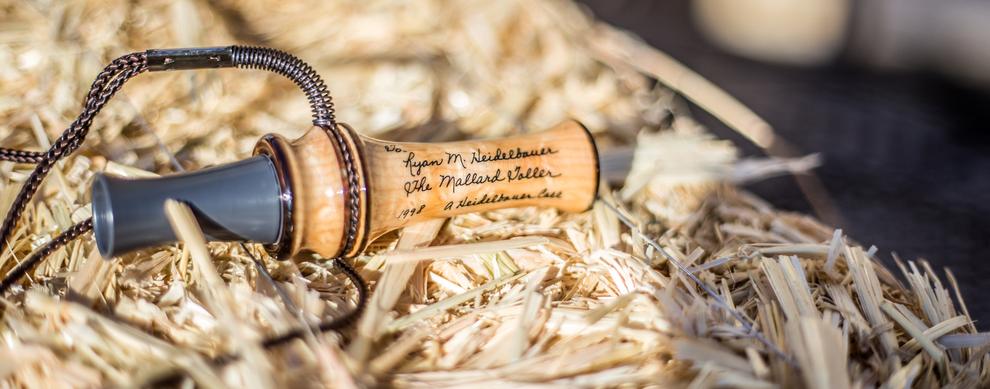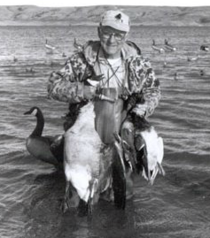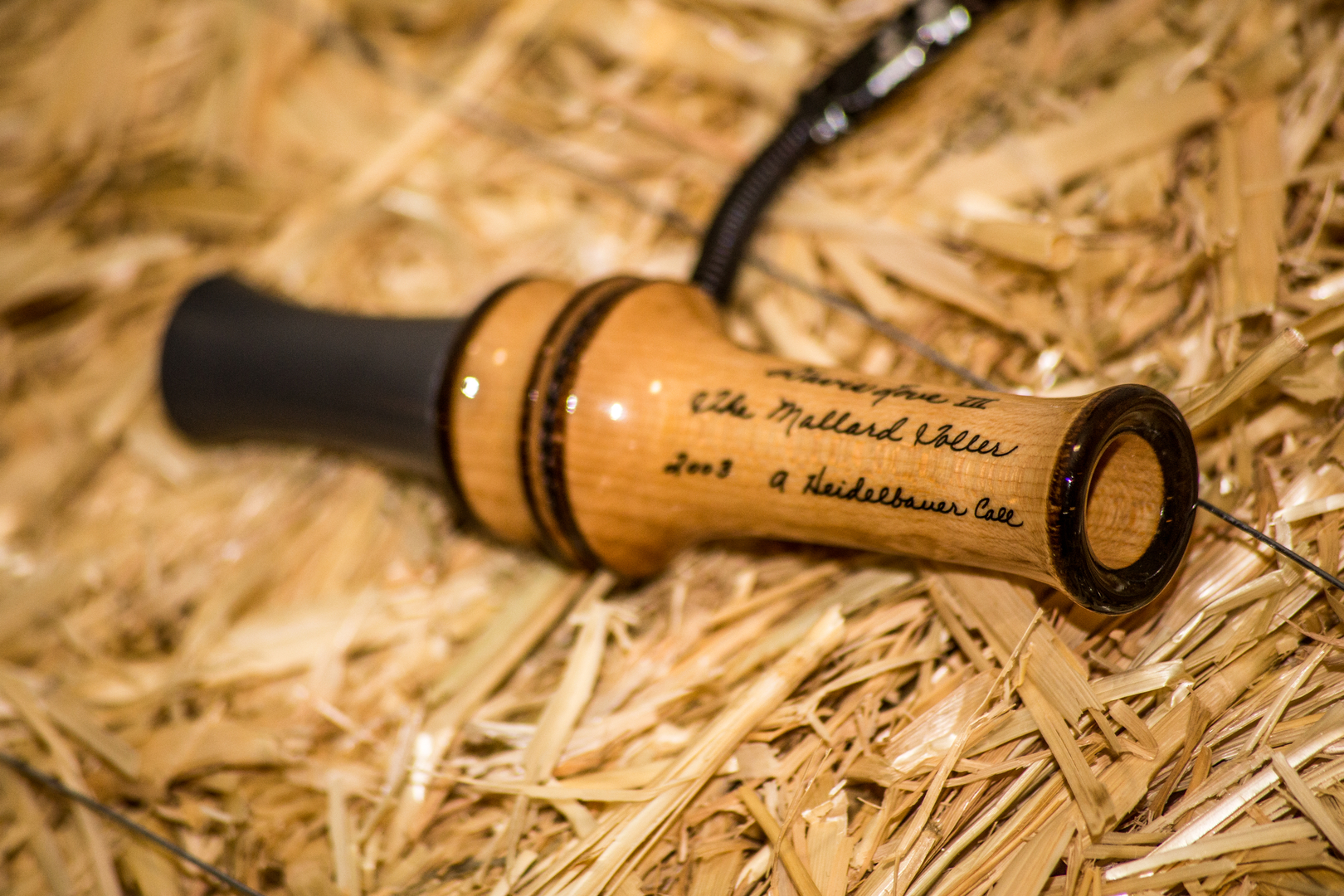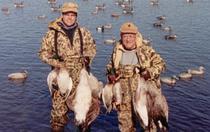
Frank was born in 1918 on a small farm in rural Iowa. As a young boy on the farm, he learned how to read ducks and call them by mouth. He fed and cared for dozens of wild Mallards retrieved from nests by his German-immigrant father who had saved them from the haying blade. He loved hunting as a young boy, but lost his ability to call ducks by mouth when he reached puberty. Thus the search began for a duck call that could exactly mimic a live duck. He traded a few shotgun shells for his first duck call and began tinkering with the anvil or sounding board to create his dreamed of masterpiece. He had little success to being with. During those years he was confounded by the fact that temperature and humidity changes did not agree with wood and cork. The calls would never retain the sound he was looking for.
could exactly mimic a live duck . . .
Then came World War II. He was a bush pilot flying through the mountains of China, Burma and India supporting Vinegar Joe Stillwell’s Fifth Chinese Army. He flew 305 missions over the “hump” in the Himalayan Mountains. He was said to have pioneered the lowest altitude route over the “hump.” This was very important to the service men as Frank could transport cold beverages (Beer!) over the “hump” without them exploding or popping the tops. He survived two near fatal crashes and returned home a decorated veteran, earning Distinguished Flying Crosses.
valued by everyday hunters and collectors alike
It was during the war when he discovered the new “miracle plastics” and what he thought was needed to maintain the integrity of sound he desired. Upon returning home he purchased acrylic rods and nylon sleeves and began shaping. Testing many sizes and shapes including wide-troughed sounding boards, narrow-troughed, deep-troughed, shallow-troughed, step angles, and shallow angles until he found the perfect combination. He landed on the sound of a goose first with the breaking of sound from low to high. This eventually led to The Mallard Toller. He had created the sound of ducks and geese he longed for. Calls that could be blown softly for working close birds yet could be blown with all you’ve got to reach out, often times in high winds. All of this achieved with a single reed call that would hold its tune indefinitely.
In the 1930’s he had many of the calls made by the great call makers of the time, but always lost the sounding device out of each and every one of them. He decided that when he made his duck and goose calls they would screw together. And they do! This was the second important achievement he desired when creating the Mallard Toller.
calls they would screw together...and they do!
Through the next 40 some years he ceaselessly strove to make improvements whenever possible. The design and superior craftsmanship made Frank’s Mallard Toller a coveted, one-of-a-kind tool valued by both everyday hunters and collectors alike. He was a perfectionist!
Frank passed away at the age of 84 on November 14, 2002 in Sioux Falls, South Dakota. He was still an active hunter and fisherman well into his later years, having just completed an annual family duck and goose hunting trip just four days prior to his death. In his later years, he spent much of his time creating hand-crafted fishing jigs and lures. Frank’s passing coincided with the 50th Anniversary of his famous Mallard Toller.
“Absolutely love my Mallard Toller I have had for many many years. Craftmanship and beauty all in one call.”
“Classic call with a beautiful sound, I’ve used my Mallard Toller for 25+ years”
“A perfect call to add to any call collection. Thank you Todd for a beautiful piece of art with amazing functionality.”
